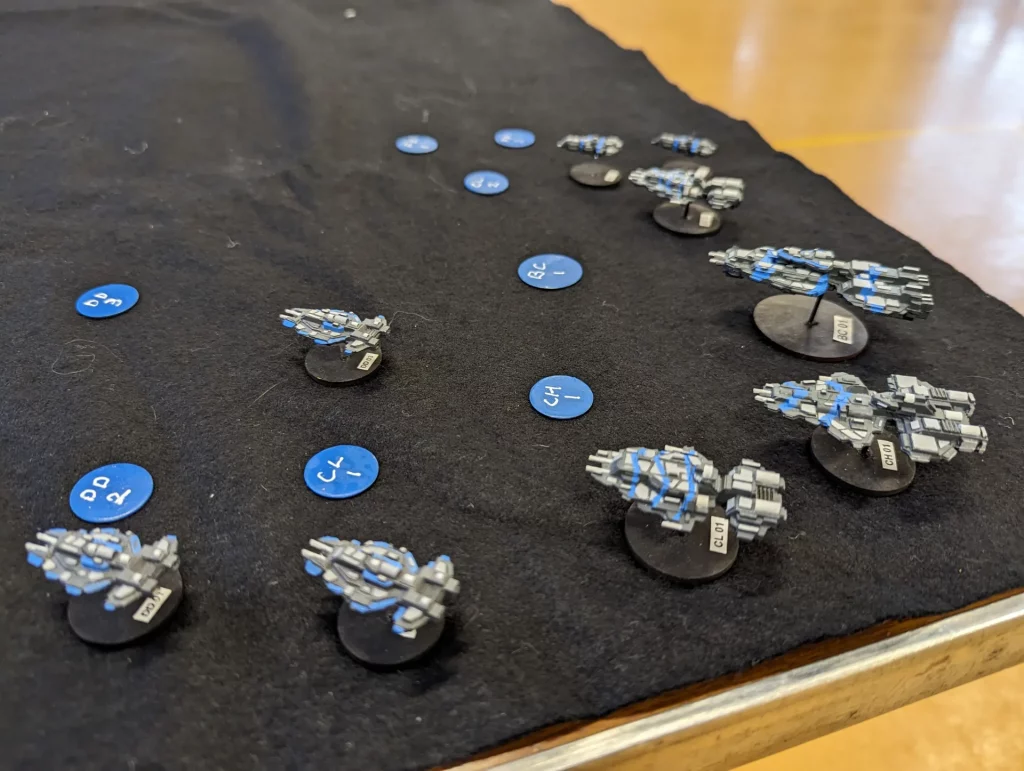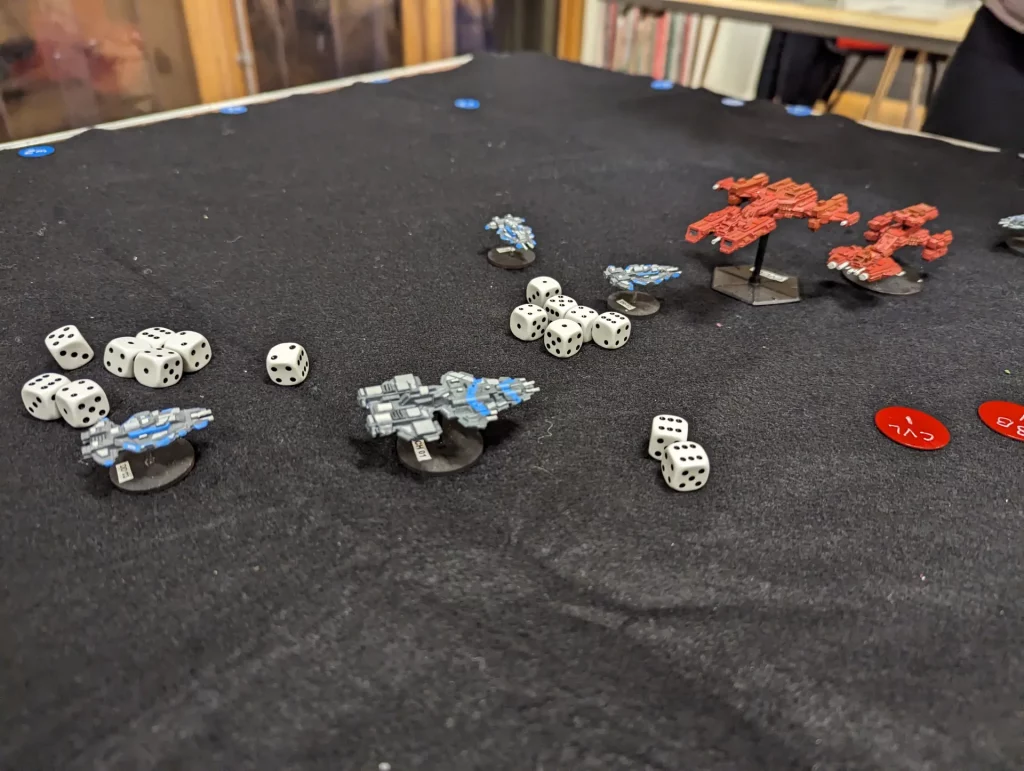The Changchun
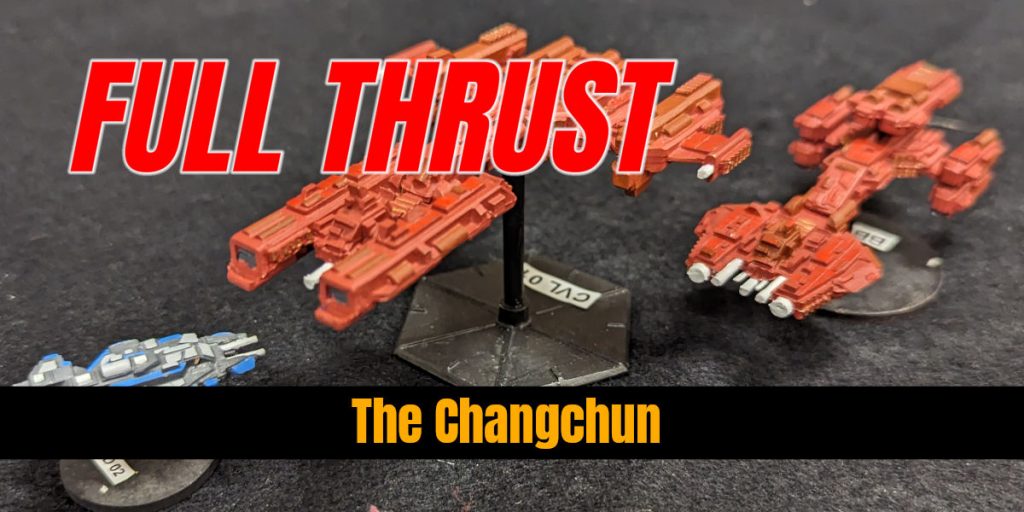
This week’s game was a return to Full Thrust, pitting the Federal Stats Europa against the Eurasion Solar Union. The ESU had the Changchun, a light carrier escorted by a battleship and a couple of destroyers. The FSE had a number of smaller ships, which included a battle cruiser, a heavy cruiser, two light cruisers, three destroyers and two frigates. Both fleets came to just under 1,500 points.
The aim of the FSE was to take out the ESU’s carrier, which was going to be a difficult task. The escorting Khalinov class battleship alone had six class 4 beam weapons – capable of hitting things out to a range of 48,000km (48″ tabletop scale). The FSE had nothing bigger than a class 3 (36″ range), but was mostly armed with class 1’s (12″) and 2’s (24″) as well as few salvo missiles.
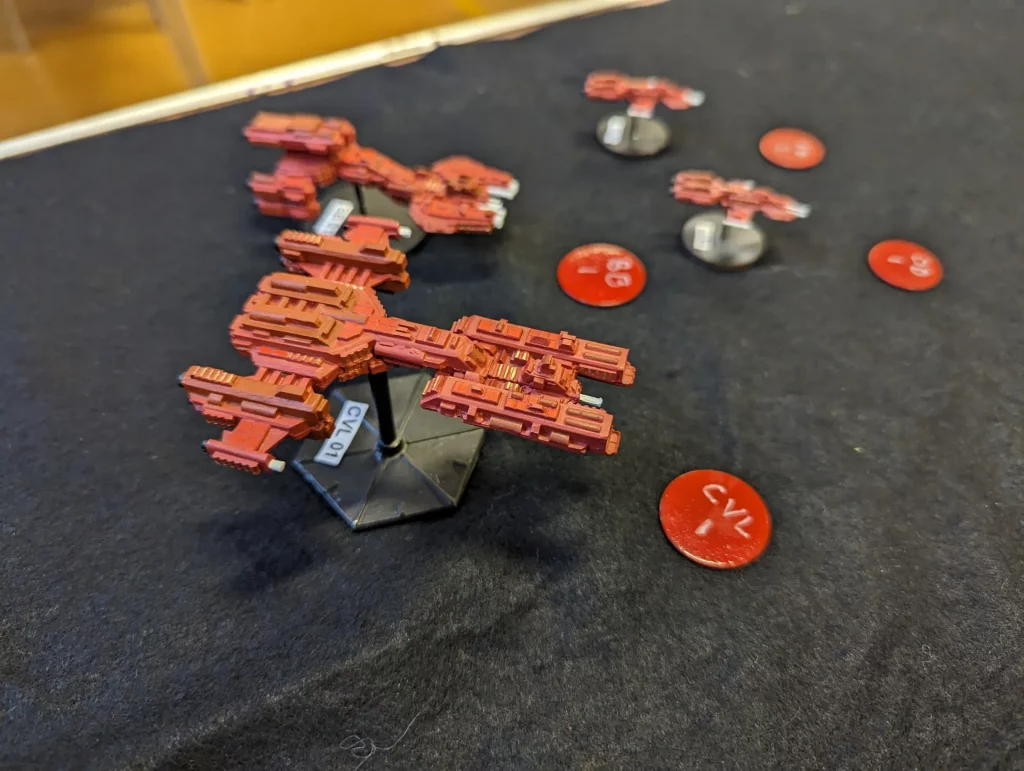
What the FSE do have is acceleration – the slowest of their ships has a thrust of 6 (the Ardennes class of Light Cruiser has a thrust of 8), compared to 2 for the ESU carrier and battleship. In the first turn, the ESU accelerated towards the ESU, trying to use the planet as a shield.

As is normal for us, we used vector movement, using vector markers to denote the future position of each ship. My plan was to try and keep everyone at a similar range, splitting the fleet around the planet to come at the ESU from both directions. The FSE wouldn’t be able to target the ESU until they reached the planet, but the ESU would have the range advantage until then.
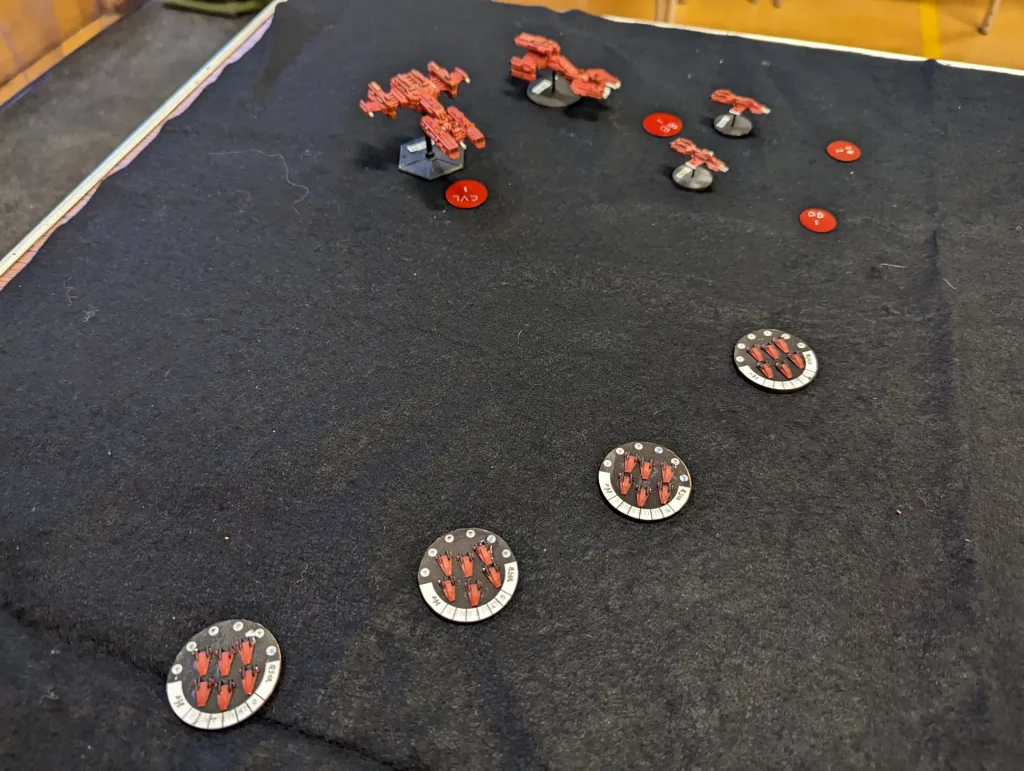
The most concerning threat of the ESU were their heavy fighters. They had four flights, the FSE had none. The FSE were also quite light on point defence as well, so the fighters had the potential to do quite a bit of damage which would mostly be unopposed.
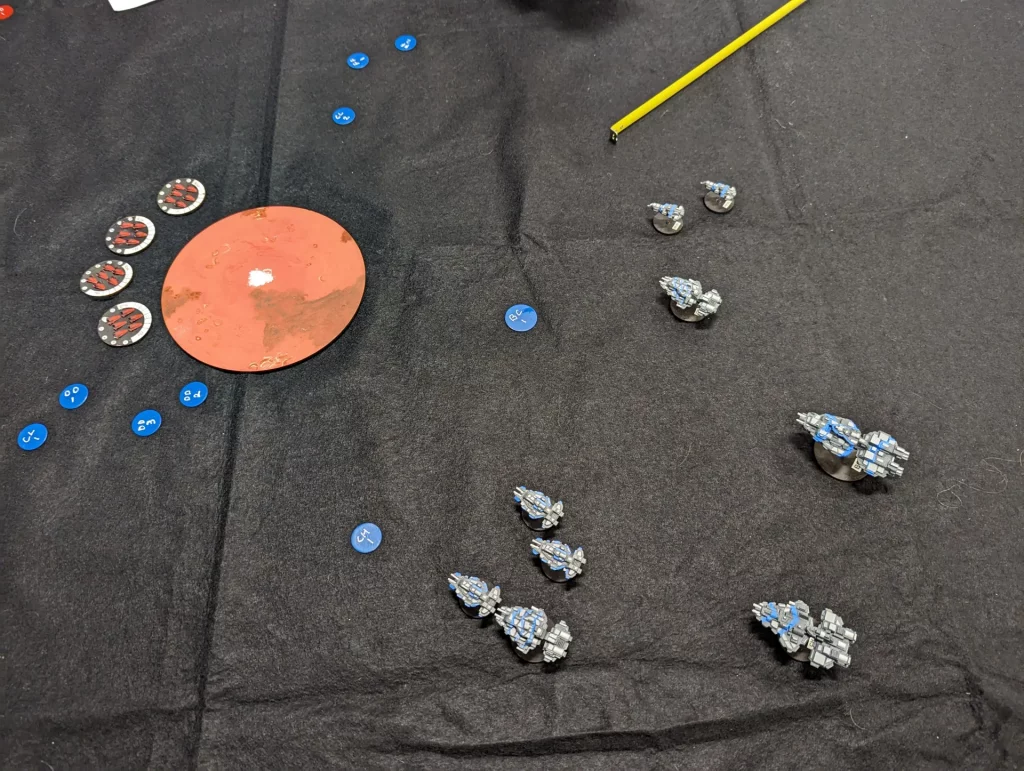
By turn two, the FSE were shifting their courses to go either side of the planet, whilst the ESU fighters lay in wait. The ESU battleship Khalinov opened fire, hitting the first FSE light cruiser and doing 11 points of damage at long range. This was enough to burn through two rows of hull boxes for the Ardennes, and a lot of systems went down. It was a lucky hit – much more damage than I had been expecting to take at this range.
By turn three everyone was getting within range. The FSE had accelerated up to quite a high velocity, which meant the FSE could begin to fire on the ESU.

The fighters had also caught up with the battle cruiser. It defended itself as best it could, taking down two fighters, but itself took 12 points of damage. It was one row of hull boxes down, but mostly unharmed apart from a few systems.
The ESU lost a destroyer, and the FSE lost one light cruiser. The FSE’s other light cruiser took out the bridge on the second ESU destroyer, whilst the battle cruiser Duquesne continued to suffer under heavy fighter attacks.

By turn four, range had closed to the point where class one beams could begin to be used. The FSE were flying past fast, swinging around to bring their weapons to bear on the Changchun as much as they could. They also chose this turn to launch all the missiles they had, aiming them at the battleship Khalinov.
The way salvo missiles work in Full Thrust is that they are placed on the table after movement orders have been written, but before ships have moved. This means the firer has to guess where the enemy ship will be. As long as the missiles are within 3″ of a ship’s final location, they will hit.
The battleship had a thrust of 2, so it couldn’t be more than 2″ from its projected position, making a hit guaranteed. I hadn’t aimed at the carrier, because the carrier had huge amounts of point defences, whilst the battleship was relatively undefended. What I failed to take into account though was that the carrier had area defence, which meant it could help defend other ships within 6″. It managed to slide up close enough to the Khalinov to provide protection. In the end, all missiles were shot down.
The Khalinov, having survived the missiles, opened up on the FSE heavy cruiser and second destroyer. Both survived. At this range, the Khalinov’s six class 4 beams were doing 4D6 damage each. Which is a lot, but an equivalent mass of class 1 or 2 beams would be doing twice as much damage.
This is why I’d try to get in close – not only because I had short range weapons, but because the ESU’s big guns aren’t as efficient at close ranges.
The remaining two FSE destroyers were taken out by the Changchun light carrier, which suffered some damage itself. The Duquesne battlecruiser was then finished off by the ESU fighters.
There weren’t many FSE ships left at this point, and their vectors were taking them right to the edge of the table. They could decelerate to stay on, but it was considered safer to continue flying.
The fighters were now free to harass any other ships they wanted to, and the battlecruiser and light carrier had enough fire power to probably finish off everything else in the next turn, so it was a definite win for the ESU.
The tactic of getting in close faster meant the FSE did more damage this time, but still not enough. Rather than being picked off at range, they were blasted in close proximity. The two biggest problems though were that the ESU had fighters, which the FSE didn’t have many defences against, and that the ESU had lots of defences against the FSE’s salvo missiles.
It has been pointed out that heavy fighters are probably over powered. They take only half damage, so take little damage from PDS. Possibly they should count as having one level of shields instead, so they only take damage on a 5+, rather than on a 4+.
I’m also thinking of limiting the number of PDS a ship can use against a single salvo of missiles to 4, similar to what I do against fighters. Since there were two ships defending this time, it wouldn’t have made much difference, but it may have made some.
Anyway, it was an interesting game to see how things played out.
